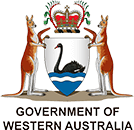Obesity in children
Key facts
- Childhood obesity is when a child has too much body fat for their age and is often represented with a body mass index (BMI) at the 95th percentile or higher for their age group.
- Living with overweight or obesity is common in Australia, affecting 1 in 4 Australian children.
- Living with overweight or obesity can negatively affect your child's physical health, mental health and emotional wellbeing.
- Helping a child or teenager maintain a healthy weight means they're less likely to struggle with weight problems as adults.
- You can help manage obesity in children by modelling healthy eating habits, encouraging regular physical activity and limiting screen time.
What is obesity in children?
A child or adolescent who is living with obesity has more body fat than other children of the same age. It's healthiest for your child to stay within a certain weight range for their height and age as they grow. This is known as 'BMI-for-age'.
A BMI-for-age score between the 85th and 95th percentile could mean your child's body weight is outside a healthy range. This is known as living with overweight.
A BMI-for-age score at the 95th percentile or higher could mean your child's body weight is outside a healthy weight range. This is known as living with obesity.
In Australia, around 1 in 4 children aged between 4 and 15 years live with overweight or obesity. Living with overweight or obesity can significantly affect a child's physical health, mental health and wellbeing. They are also more likely to live with overweight or obesity during adulthood.
What are the signs of obesity in children?
The most visible sign of obesity is excess body fat. You may also notice your child is growing out of their clothes faster than other children. They may also look bigger than other children of the same age and height.
It is not always easy to tell if your child is living with overweight or obesity. You can use NSW Health's healthy weight calculator to estimate your child's BMI-for-age for children aged over 2 years. Remember that most online BMI calculators are designed for people aged 18 years and over.
It's best to see your doctor to understand your child's BMI measurements as they grow.
What causes obesity in children?
Many things can cause your child to gain weight. For most children, obesity occurs if they gradually take in more energy (measured in kilojoules) from eating and drinking than the amount their bodies use to grow, play and exercise. Unused energy is turned into body fat. Over time, this may increase your child's body weight beyond what is considered healthy for their age.
Some other causes of overweight and obesity during childhood may be outside of their control, such as:
- hormonal problems — such as hypothyroidism
- prescription medicines — such as steroid medicines, medicines for epilepsy or antidepressants
- genetic conditions — such as Prader-Willi syndrome
When should I take my child to see a doctor?
You should take your child to see a doctor if you:
- are concerned about your child's weight
- have made some changes regarding diet and exercise and they are not helping
- are worried about the impact living with obesity is having on your child's mental health
Your doctor can assess your child's weight and advise on lifestyle changes or refer you to other health professionals such as a paediatrician, dietitian or psychologist.
Learn about how to get the most out of your doctor's appointment.
FIND A HEALTH SERVICE — The Service Finder can help you find doctors, pharmacies, hospitals and other health services.
How is obesity in children diagnosed?
Body mass index
If your child is older than 2 years of age, their doctor can diagnose overweight or obesity using a BMI percentile chart. Your child's BMI is calculated and then charted across weight information for the population as a growth curve. This takes into consideration their sex, age, growth and maturation patterns.
BMI is calculated as the ratio of weight in kilograms divided by height in metres squared (kg/m2).
A healthy BMI for children and teenagers will vary according to their age:
- A BMI-for-age between the 5th and 85th percentile is considered a healthy weight.
- A BMI-for-age between the 85th and 95th percentile is considered above a healthy weight and overweight.
- A BMI-for-age at the 95th percentile or greater is considered well above a healthy weight and obese.
The BMI classification has some limitations. It does not distinguish between the proportion of fat or fat-free-muscle. This makes it less accurate for some body types.
Children under 2 years are not diagnosed with overweight or obesity. From birth until 2 years, growth charts are used to help check that babies are growing well. You should not feel pressure to make sure your baby's weight is on or near the 50th percentile (average) for their age. All babies grow at different rates. They come in all shapes and sizes.
Read about baby growth charts.
Waist circumference
Sometimes your doctor may want to measure your child's waist circumference. Your child's waist circumference can help estimate their risk of cardiovascular disease.
Your doctor can measure your child's waist circumference using a measuring tape around their stomach, roughly at the level of their belly button.
How is obesity in children treated?
If your child is living with overweight or obesity, the aim of treatment is to help them achieve a healthy weight, rather than lose weight. In most cases, younger children should not aim to lose weight — rather they should 'grow into their weight'. This means that the goal is for them to gain height without gaining weight. Deliberate weight loss in children can affect their growth and development.
To help your child achieve a healthy weight, it's a good idea to consider:
- the foods and drinks your child consumes
- the amount of physical activity your child does
It can help to get advice from a multidisciplinary team that includes:
- your child's GP
- specialist doctors
- nurses
- social workers
- dietitians
- psychologists
Together, they can guide you in making the right changes to your child's diet and lifestyle to encourage them to reach a healthy weight.
Read more about the Australian Dietary Guidelines.
Read more about the Australian 24-hour movement guidelines for children and young people (5 to 17 years).
ASK YOUR DOCTOR — Preparing for an appointment? Use the Question Builder for general tips on what to ask your GP or specialist.
Share healthy eating habits
Here are some suggestions to encourage your child to eat more healthily and achieve a healthy weight:
- Increase your child's intake of healthy foods — fruits, vegetables, grains, proteins and reduced-fat dairy every day.
- Reduce sugary drinks, such as soft drinks and fruit juice. Encourage your child to drink more water.
- Cut back on junk foods that contain extra salt, sugar and saturated fat — such as biscuits, cakes, lollies, chips and fast food.
- Rather than asking your child to finish what's on their plate, encourage them to eat when they are hungry, and to stop when they feel full.
- Explain to your child that some foods are 'sometimes' foods. Save them for special occasions.
- Make mealtimes free from screens and eat meals as a family.
Kids who grow up with healthy eating habits are more likely to make healthy food and drink choices when they're older.
See more ideas on healthy eating habits to share with your child.
Get active together
Physical activity is an important way to achieve and maintain a healthy weight. School-aged children should have at least 60 minutes of activity every day.
You can encourage your children to be active by doing physical activity together. Here are some ideas:
- Set an example and be active yourself.
- Include physical activity in your and your family's day, such as walking to school and doing household chores together.
- Make the most of your local bush track, bike path, playground or sports field.
- Sign your child up to play a team sport.
Limit screen-based activities to a maximum of 2 hours a day for school-aged children, and less than 1 hour a day for preschoolers and toddlers.
Living with obesity
The best way you can help your child achieve a healthy weight range for their age is to support them. Get the whole family involved. It will be easier for your child to make changes if everyone in the family is modelling healthy behaviours.
Be aware of the emotional impact living with obesity can have on your child.
How you talk to your child about obesity can affect their willingness to aim for a healthy weight.
Keep the focus of your conversation on maintaining a healthy lifestyle and good health. Here are some tips:
- Instead of talking about being 'fat', 'heavy' and 'obese', use phrases like 'above your healthiest weight'.
- Do not compare your child to their peers. Discourage them from comparing themselves.
- Instead of labelling foods or activities as 'good' or 'bad', use words such as 'healthy' and 'healthier options'.
- Do not make negative comments about your own weight or body shape — your children are always listening to you and will notice and model these comments.
- Focus on taking steps towards a healthy lifestyle rather than setting weight loss goals.
What are the complications of obesity in children?
Left unchecked, obesity can cause physical, social and emotional health problems.
Weight-related complications include:
- stress on bones and joints such as the hips, legs and ankles
- sleep problems such as sleep apnoea
- high blood pressure (hypertension)
- high cholesterol
- type 2 diabetes
The longer your child has an unhealthy body weight for their age, the more likely it is that your child will live with obesity as an adult, which also carries health risks.
In addition to complications to your child's physical health, children living with overweight and obesity can sometimes experience teasing or bullying. This can affect their:
- emotional wellbeing
- self-esteem
- school experiences
- peer relationships
Read about young children and bullying.
Can obesity in children be prevented?
There are many factors that contribute to overweight and obesity in children. Not all of them are preventable, but there are things you can do to help your family maintain a healthy weight:
- Eat well: Review how many high-energy, low-nutrition snack foods and sugary drinks your family buy, including juices, soft drinks and flavoured milk. Consider how often you buy takeaway meals.
- Be physically active: Only 1 in 4 children aged 5 to 12 years do enough physical activity each week.
- Limit screen time: Many children spend more than the recommended maximum of 2 hours a day in front of screens such as computers, televisions, smartphones and tablets.
Resources and support
For more information and support, try these resources:
- The Dietitians Australia website has nutrition information, tips and recipes to help your child eat well.
- LiveLighter offers a range of tools and calculators to help you and your child make positive lifestyle changes.
- The Sydney Children's Hospital Network has tips for healthy eating that encourage your family to make choices that promote health and wellbeing.
- You can also call the healthdirect helpline on 1800 022 222 (known as NURSE-ON-CALL in Victoria). A registered nurse is available 24 hours a day, 7 days a week.
Do you prefer to read in languages other than English?
The NSW Government has translated the Australian Guide to Healthy Eating into many community languages.
Looking for information for Aboriginal and/or Torres Strait Islander people?
The 'Tucker Talk Tips 4 Kids' guide provides information for Aboriginal and Torres Strait Islander people about what foods to choose each day for a balanced and healthy diet.
Rethink Sugary Drink has resources for Aboriginal and Torres Strait Islander people to help you cut out sugary drinks for you, your family and community.
Learn more here about the development and quality assurance of healthdirect content.
Last reviewed: September 2024



















